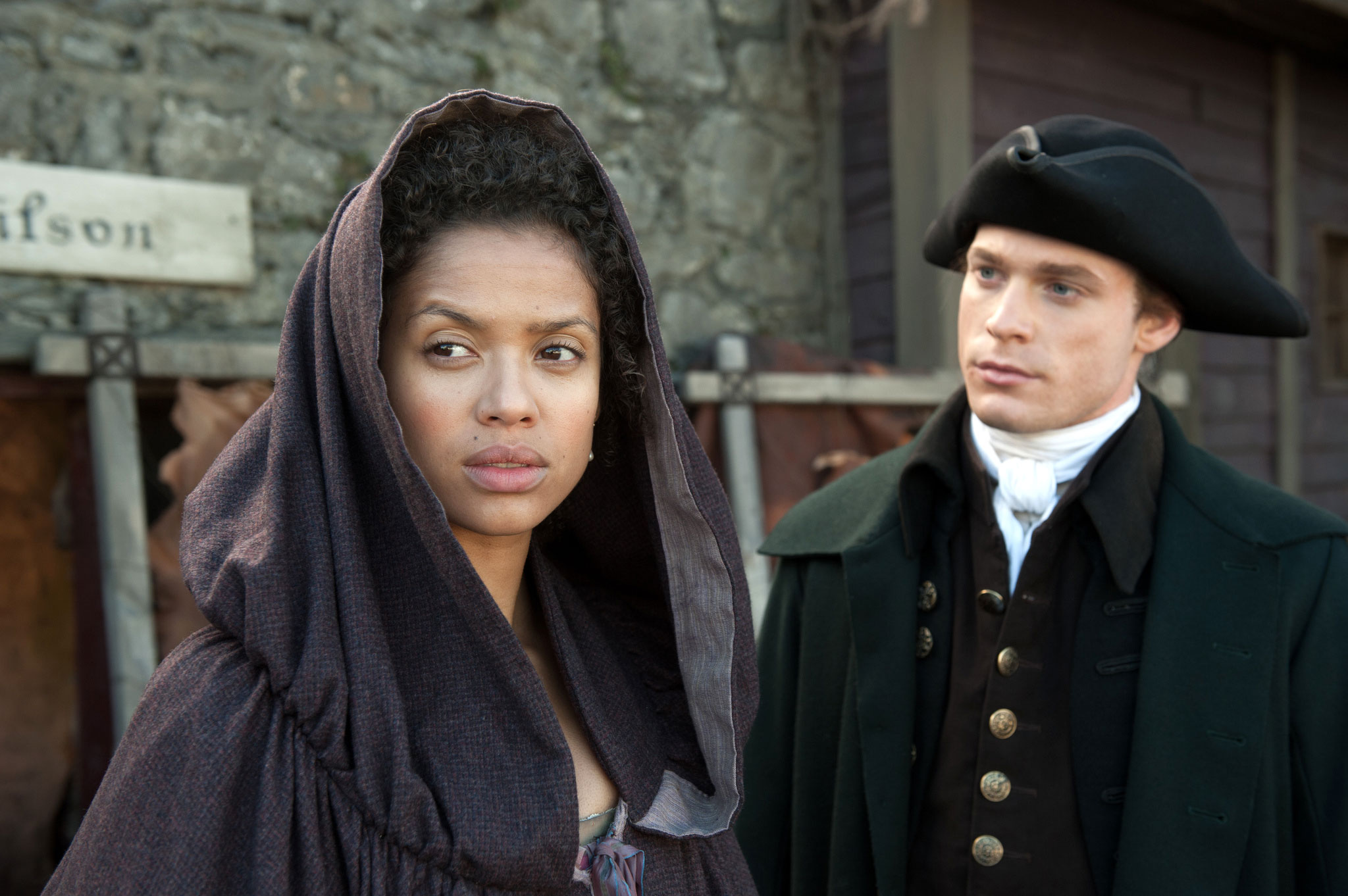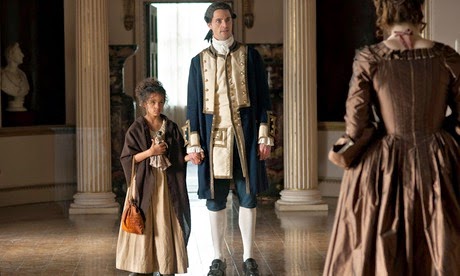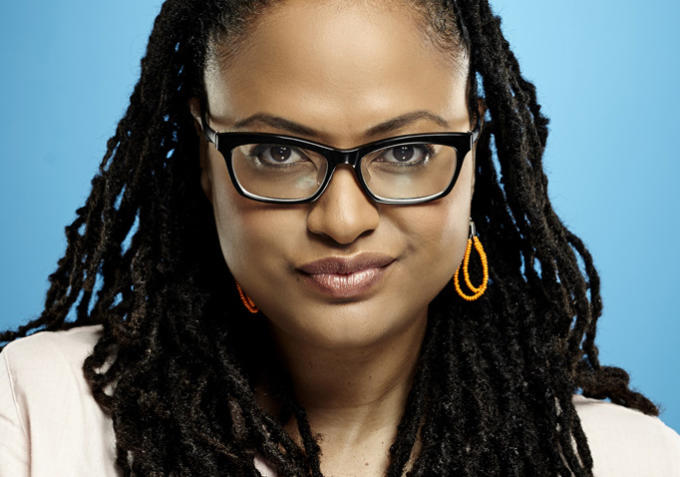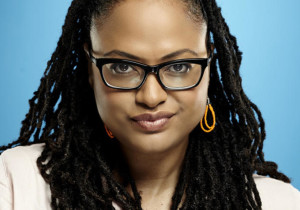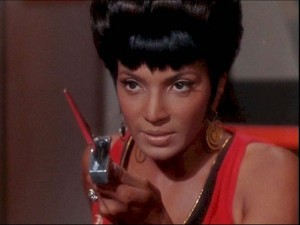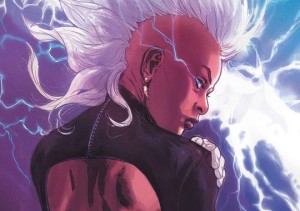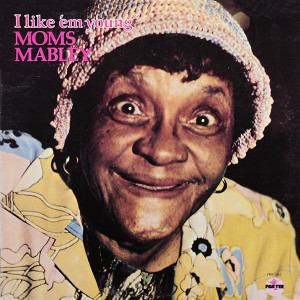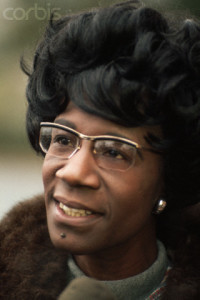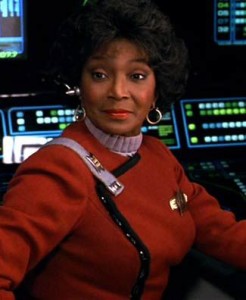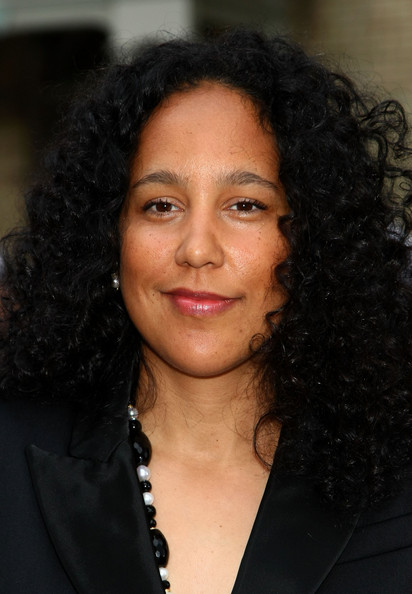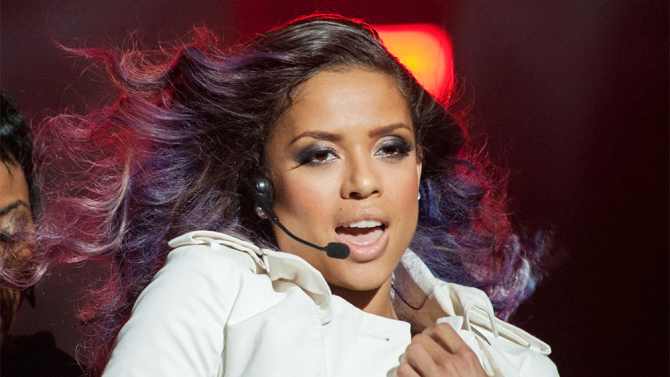This guest post by Atima Omara appears as part of our theme week on Interracial Relationships.
Race, class, and love are at the center of Amma Assante’s beautifully made film Belle. It tells the story of Dido Elizabeth Belle Lindsay, the biracial daughter of Maria Belle, an enslaved African woman in the West Indies, and Sir John Lindsay, a British career naval officer who was stationed there. Unlike many children who were the product of a slave and a wealthy white man, Dido’s white father took her back to England to be raised with her wealthy white relatives. While set in England, the film is a poignant interpretation of interracial relationships in the 18th century and how color, particularly what shade of “black,” often factored into who you loved and found desirable, a dynamic that affects many portrayals of interracial relationships in film and television.
The unique life and story of Dido Elizabeth was discovered due to a portrait that hangs in Scone Palace that intrigued many, including Belle‘s British director of African descent, Amma Asante, who told NPR:
“You see a biracial girl, a woman of color, who’s painted slightly higher in the painting, depicted slightly higher than her white counterpart. She’s staring directly out at the painter, you know, with a very direct, confident eye. … So this painting flipped tradition and everything that the 18th century told us about portraiture.”
As in real life, Dido (Gugu Mbatha-Raw) grows up best friends with her cousin Elizabeth (Sarah Gadon). When they reach their teen years, as is par for the course with any British film reflective of young women’s lives of the period, it’s time to find a husband. As such, they are introduced to the sons of a prominent family nearby, the James Ashford (Tom Felton) and Oliver Ashford (James Norton).
Oliver takes a fascination with Dido, to the chagrin of his brother James. “One does not make a wife of the the rare and exotic, Oliver. One samples it on the cotton fields of the Indies,” James says, yet Oliver dismisses his comments and pursues Dido anyway. But even Oliver’s professed love for Dido and his subsequent proposal are filled with racist undertones, commenting how lovely and intriguing she is in spite of her African heritage. Dido eventually refuses to marry Oliver when she is assaulted by his racist brother and becomes aware that James’ racist sentiments are shared by his mother; that she is only tolerated due to the sizable wealth she inherits from her now dead father.
What elevates Dido to a status where she is even pursued by white men of the British upper class is mostly her money. For example, her cousin, Elizabeth, while white, inherits less money and as a result, is viewed as a less attractive prospect for men of the English gentry looking to make a solid match. Oliver’s comments to Dido highlight that she is palatable due to her mixed heritage, a racial preference known as colorism, a prejudice or discrimination against individuals with a dark skin tone, typically among people of the same ethnic or racial group. If Dido had been as black as her mother, she would more than likely, no matter how wealthy, not have been a tenable mate for any member of the British upper class of her time.
The colorism Dido experiences is seen throughout different Western societies that had Black African enslavement as part of its world. Many stories of colorism also exist in American history and folklore and we see how it impacts romantic relationships and in American film and TV. For example, New Orleans hosted Quadroom Balls in the 19th century. The word “quadroon” refers to people of color with one white parent and one half-white parent. These balls encouraged multiracial women to form liaisons with a system of concubinage, known as plaçage, comprised of highly educated and socially refined women. They were unable to find Black men of their own social status, so they became the mistresses of white men.
The film The Courage to Love depicts a representation of this world. Vanessa Williams plays Henriette Delille, a historical multiracial woman of color expected to marry a wealthy white man as her mother had before her. These wealthy white men were attracted to quadroon women because they weren’t so obviously black and these women possessed the training and education to be partners to powerful white men. Some white men would slip away from the city’s balls for whites to attend these afterwards.
Like Oliver, these men of New Orleans who catered to the plaçage system exoticized women of color and by frequenting these balls and taking women of color as mistresses, cemented a colorism caste amongst the Black community that spread throughout the American South. It is important to note that not only did the plaçage system in New Orleans keep multiracial women a certain shade of “acceptable” black skin, but like Belle’s experience growing up with her white father’s noble family, African Americans who obviously were children of interracial relationships benefited financially, creating not only a caste system in the Black community based on the lightness of one’s skin but also on wealth.
These enclaves of lighter-skinned Black communities descended from interracial relationships have been shown in American film. Eve’s Bayou, written and directed by Kasi Lemmons (making her directorial debut), centered around a town in Louisiana’s Black community who claims descent from a French aristocrat and who founded the town of Eve’s Bayou. The residents are primarily lighter-skinned, mixed-raced people. The Batistes who are the center of that town are rather light-skinned with the exception of the father, played by Samuel L. Jackson.
In Harlem Renaissance writer’s Dorothy West’s book The Wedding, West writes about “The Oval,” an elite Black community that lives and summers on Martha’s Vineyard. While Eve’s Bayou was fictional, the Oval is an actual wealthy Black community. At the center of West’s novel adapted in to a film with the same name, a young Black woman named Shelby Coles (Halle Berry) and her fiancé, a young white man named Meade Howell (Eric Thal) come home to visit her family for the wedding in the summer of 1953. Shelby’s family is displeased that Meade is a financially strapped musician, but they are willing to make the most of it. Meade’s own family is displeased his fiancée and her family are Black, which further agitates Shelby’s family.
At the crux of it all are two issues: first, the Black community in which Shelby was raised, a community that is financially successful but primarily light-skinned, so much so, the Coles’ family maid comments “they are all high yellow up here.” Secondly, Shelby’s family questions her about whether this is the marriage she wants due to Meade’s family’s snub. The film centers around the present community reflected in interactions with neighbors and family and the past relationships of Shelby’s ancestors from both her parents and how they have impacted her family.
Shelby’s grandmother was a white Southern woman named Josephine (Margaret Welsh) who married an up and coming emancipated dark-skinned Black man, named Hannibal (Gabriel Casseus). Their daughter, Corinne (Lynn Whitfield), grows up emotionally traumatized from the fact she was never fully loved and accepted by her mother due to Corinne being part Black. Corinne’s emotional trauma is reinforced by her white Southern grandmother, Caroline (Shirley Knight), Josephine’s mother who always says to her great-grandchildren and great-great-grandchildren, “Where is your sun bonnet?” — an item which protects their skin from getting darker. One imagines Caroline impressed upon Corinne, who she helped raise after Corinne’s parents died, the same colorist views.
The damage of this colorism wreaks havoc on Corinne’s emotional psyche, who gets an operation to stop herself from future pregnancies, worried that any future children will “look like her father” who was dark-skinned. Corinne’s two children feel its effects: Shelby’s sister Liz (Cynda Williams) is happily married to her doctor husband, Lincoln (Richard Brooks), however Lincoln is dark-skinned. It is clear when the audience is introduced to Liz and Lincoln something terrible happened between Corinne and her son-in-law; Lincoln refuses to attend Shelby’s wedding primarily because he does not want to deal with Corinne. When Liz begs him to come with her, Lincoln snidely says, “That’s right, you need me there to prove a point to your mother, that you are happily married and that your husband is not the barbarian she imagined…I will never set foot in that house. I wasn’t good enough for her then why should I be good enough for her now? I don’t see my skin getting any lighter.”
Perhaps Meade’s family’s snub, and her past mistakes allowed Corinne to be honest with Shelby telling her, “I know it’s harsh when I spoke about you being a stain on your in-laws’ sheets but it’s because I was a stain on my mother’s.” Corinne’s husband and Shelby’s father, Clark (Michael Warren) is affected by family expectations on race as well. Flashbacks show his young love for a dark-skinned Black woman, deemed not the proper image of a wife he needs as an up and coming Black doctor.
Much like Corinne’s parents, Clark’s parents also struggled with their relationship due to color. His father, Isaac Coles (Peter Francis James), a light-skinned man who was a successful doctor and his wife, Ellen Coles (Marianne Jean Baptiste) who is financially successful in her own right, is also dark-skinned. Ellen is also painfully aware of her darker complexion and that it could be a liability to her husband. As a result, Ellen often hides herself away. From his personal experiences, Shelby’s father Clark, worried that perhaps his daughter Shelby is feeling familial or Black society pressure her to marry someone like Meade. He asks her “who has she brought home” that isn’t white or light-skinned that were her dates. He urges her not to make the same mistakes he did.
There is an option for Shelby to marry an eligible Black man, Lute McNeil (Carl Lumbly), a charming newcomer to The Oval. While wealthy and successful, Lute is also a dark-skinned Black man. Shelby has a great relationship with Lute’s three children and despite her engagement, Lute persists in pursuing her and Shelby finds herself attracted to him. Shelby’s mother disapproves of Lute because of his dark skin and his new money. She tells him that despite his financial success, he will “never belong” to the Oval. In the end, Shelby chooses Meade — deciding that class and race are artificial constructs and that love only matters. While I agree with this contention of Shelby’s, one is left to wonder how much of this family baggage affected her in her choices of dating and love.
It is clear that in film and television, colorism still plays a role in relationships, whether interracial or non-interracial. People have criticized the many music videos of hip hop and R&B artists that feature light-skinned or ethnically ambiguous love interests. Hollywood also faces criticism as dark-skinned Black women are more regularly cast as asexual (desexualizing Black women, portraying them with no desires) and never able to find love.
We have come a long way in having honest conversations about this in film and television and even literature. Media has progressed in portraying women of color who are darker-skinned as desirable and sexy to Black and white people, such as Viola Davis’s portrayal of Annalise Keating on How To Get Away With Murder, where she has relationships with a white man, Black man, and a white woman. However, the fact that Davis’s character is still groundbreaking shows just how far we still have to go in representing all the hues of Black women without falling victim to colorism.
Atima Omara is a political strategist, writer, activist who has served as staff on eight federal and local political campaigns and worked for progressive causes. Her writings focus on gender, race, and politics but also how gender and race are reflected in film and popular culture. In her spare time, she reads, watches movies and documentaries, and attends film festivals when she can. Read more of her feminist-friendly film, TV, and media critiques, plus other updates at her personal blog. You can follow her on Twitter.
